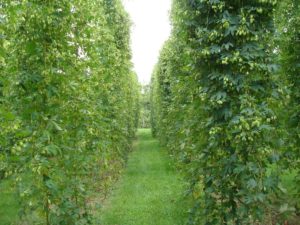Weather impacts all crops, as all plants prefer certain climatic regimes.
Fermented grain is an important ingredient in beer brewing. It defines the alcohol content.
Hops are just as critical, as the flower buds of hop plants add unique flavors, aroma and bitterness to the beer.
Hops grow very fast and require a lot of water. As the Pacific Northwest of the U.S. gets a lot of precipitation, this is a major hop-growing region as irrigation needs are limited. Washington State produces almost three-quarters of the hops used in US beers, with Oregon and Idaho contributing the second most hops. A drought in those regions will significantly reduce yields of hops and impact the beer brewing economy, leading to higher prices and a change in taste of some brands.
In 2015 the hops growing region of the Northwest had an unusually warm winter that led to widespread drought. As a result of the warm winter, the Cascades got mostly rain and a substantially reduced snowpack resulted. By May, an important time for the hops to be watered, the area was starved for water as there was no snow to melt.
Hops are grown on a type of hemp plant and grow best in USDA hardiness zones 5 through 9, which includes Wisconsin. The Wisconsin Hop Exchange Cooperative is one group that is working to establish the state as a producer of high-quality hops.
If you are a beer drinker who likes hoppy IPAs, you might hope for the exchange to prosper and for the Northwest to avoid developing a drier climate.


